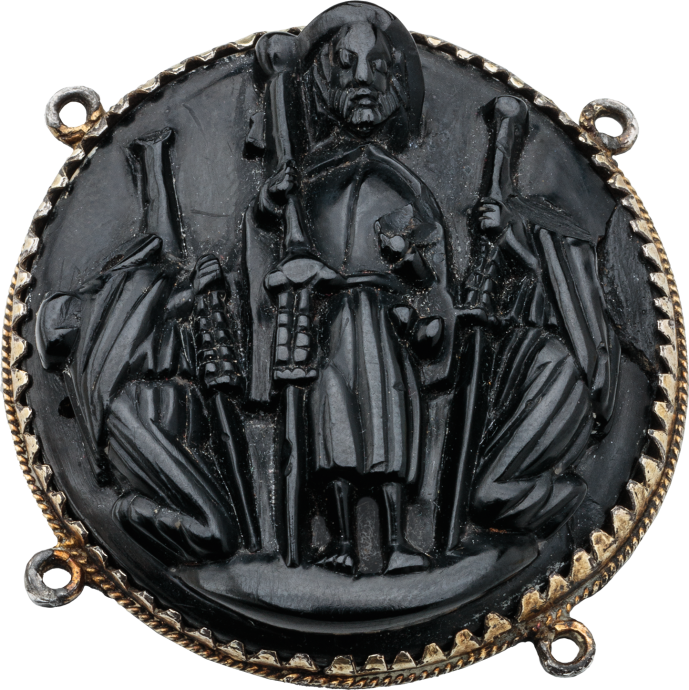


Badge with St. James the Great
, Northern Spain, 16th century
Badge with St. James the Great
Description
According to the Roman naturalist Pliny, jet, the material of which this pin was made, prevented snakebite and was “thrown up by the sea.” The first quality would certainly have been reassuring for a pilgrim who owned this object and who had to make long journeys over unfamiliar terrain. The second quality made jet an especially fitting material to honor St. James, given that his body arrived in Spain mysteriously, carried there “by the sea” from the Holy Land. Santiago de Compostela was a major center for jet carving from the late Middle Ages, and highly polished jet was a desirable and common material for pilgrimage souvenirs. One even finds scallop shells, the pilgrim’s badge for Santiago, carved of jet.
Some of the imagery of this small roundel is difficult to decipher, but reference to a larger sculpture of St. James, also carved in jet and surely also a pilgrimage memento, clarifies the details. What we are looking at is two pilgrims kneeling to either side of the larger figure of the saint. (Jet fractures easily, so the loss of the heads of the pilgrims on this badge is not surprising, although the precision of the loss may implicate some sort of deliberate damage.) The sculpture from the Hispanic Society of New York includes the inscription “Pray for us, St. James,” clarifying the nature of both pieces as intercessory; that is, the pilgrims wished for James to act as intermediary for them before God.
All three figures on the roundel hold staves and rosary beads, again identifying each as a praying pilgrim, a desirable status reflecting the aspirations of the owner, committed to the journey and hoping that it would bring him or her religious reward. James himself was typically characterized as a pilgrim in medieval imagery, and here we see him wearing a warm capacious cloak, a wide-brimmed hat, and in addition to his staff, carrying what appears to be a water canteen.
The roundel was at one time modified to be worn or attached as a pendant, but it was originally intended as a badge. It has four loops (none of which is at the top of the roundel), which would have allowed it to be sewn to a cloak or a hat. Given that the pilgrim would have worn this roundel prominently displayed on his or her clothing, we can see its imagery as an act of self-definition—a gesture declaring that the wearer is a pilgrim, has been to Santiago, and has taken James as a patron saint and role model.
